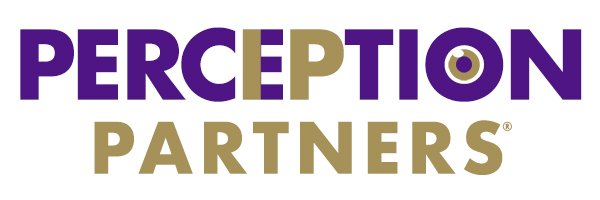Drones and UAVs Market & IP Landscape
Drones or unmanned aerial vehicles (UAVs) are aircraft without a human pilot on board. Essentially, a drone can be controlled as remotely-piloted aircraft or fly autonomously using software-controlled autopilot assistance that works together with onboard sensors and a global positioning system (GPS).
Levels of drone performance (e.g., maneuverability) and autonomy depend on a combination of computing capability (system-on-a-chip), network speeds, hardware (e.g., actuators, propellers, servomotors, sensors, microcontrollers, and batteries) and system optimization (e.g., route and energy supply).
Important drone performance metrics and flight parameters include payload capacity, flight range, self-level, altitude and position hold, return-to-home, GPS waypoint navigation, orbit around an object and pre-programmed aerobatics.
Recently drones have impacted numerous industrial sectors and inspired innovative business models. Drones are leveraged in industries including: agriculture (e.g., precision crop monitoring); infrastructure monitoring; military law enforcement and border control surveillance; emergency response & rescue operations (e.g., gathering information for disaster management); and cargo transport & logistics (e.g., express shipping and last mile delivery).
Drone innovations are increasingly utilized by organizations that leverage evolving Web3 technologies including 5G networks, artificial intelligence and cloud computing
5G enables seamless data transmission for drones by providing high-bandwidth, ultra-low-latency and ultra-reliable communication. It helps to reduce the time spent between sending, receiving, and acting upon commands during flight
Carriers have tested their networks for drone compatibility. In 2022, Verizon launched 5G ultra-wideband and edge computing enabled smart drones to detect, interpret and respond to changing weather conditions in real time. T‑Mobile and the Drone Racing League launched the first 5G‑enabled drone in October 2021. Very recently, AT&T introduced an industry first drone-transmitted 5G network (Flying COW), providing connectivity both to and from drones
Artificial intelligence (AI) and cloud computing also play pivotal roles in drone safety and navigation through high-performance, onboard image processing performed with a neural network. Companies have already invested in AI with cloud computing for enabled drone technology. Qualcomm introduced Flight RB5 5G in 2021, the world’s 1st 5G and AI drone platform and reference design with best-in-class heterogeneous computing and Wi-Fi 6 connectivity. In 2022, Microsoft launched Project AirSim to train drone AI systems.
There are growing business opportunities in drone-based logistics and delivery, as evidenced by 20.3% CAGR organization growth in the past three years
Drones provide a faster route to logistics by providing on-demand and just-in-time deliveries, while eliminating traffic and parking challenges. Drones also offer sustainable last-mile delivery in a fast and contactless manner
Majority of leading drone-based logistics players in this landscape are supply chain management companies such as Walmart, Amazon, and UPS
Recently, Amazon officially rolled out drone delivery (Prime Air) to customers. Walmart expanded its drone-delivery service to reach 4 million households on May 24 2022.
Patent filing is trending upwards from the top 10 portfolio leaders, who are establishing freedom to operate
The top 10 patenting organizations cover a variety of industries including drone and airplane manufacturers, semiconductors and telecommunications equipment providers, artificial intelligence and supply chain management companies: Sz Dji Technology, Lg, Autel Robotics, Qualcomm, Boeing, Amazon, IBM, Walmart, Intel and Textron
79% of patents and applications are owned by companies headquartered in the USA, China and Korea. This indicates rapid market growth and IP protection in diverse territories
Of note, Amazon ranks as number one in granted patents (and potential roadblocks in drones) even though it falls behind some Korean and Chinese players in terms of overall IP portfolio size
Objectives of Intellar Drones and Unmanned Aerial Vehicles IP Landscape Dashboards
Intellar Drones and Unmanned Aerial Vehicles Landscape Dashboards are designed to visualize who is doing what, when and where - and for how much?
Key concepts: drones, unmanned aircraft, unmanned aerial vehicles and remotely piloted aerial vehicles
Data Coverage for Drones and Unmanned Aerial Vehicles IP Landscape Dashboards
More than 26,000 de-duplicated global simple patent families published in (machine translated) English since 2015
Technical literature, scientific, medical and engineering journal abstracts, full text (when available) & images published in English since 2017
News articles, press releases, business research, market forecasts, announcements and magazine content published in English since 2020
Categorization for Intellar Drones and Unmanned Aerial Vehicles IP Landscape Dashboards
This landscape’s technology taxonomy covers:
Drone and Unmanned Aerial Vehicle Services and Tasks
Drone and Unmanned Aerial Vehicle Hardware
Drone and Unmanned Aerial Vehicle Features
Drone and Unmanned Aerial Vehicle Automation
Drone and Unmanned Aerial Vehicle Industrial Uses
Want to develop IP strategies & insights in this landscape?
Insight-ready Intellar® market & IP landscapes




















